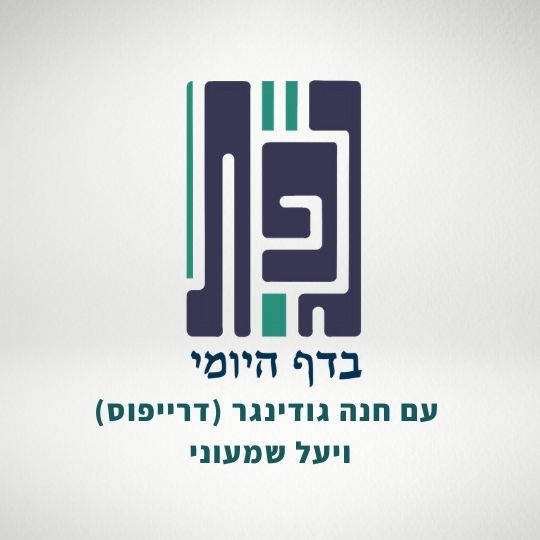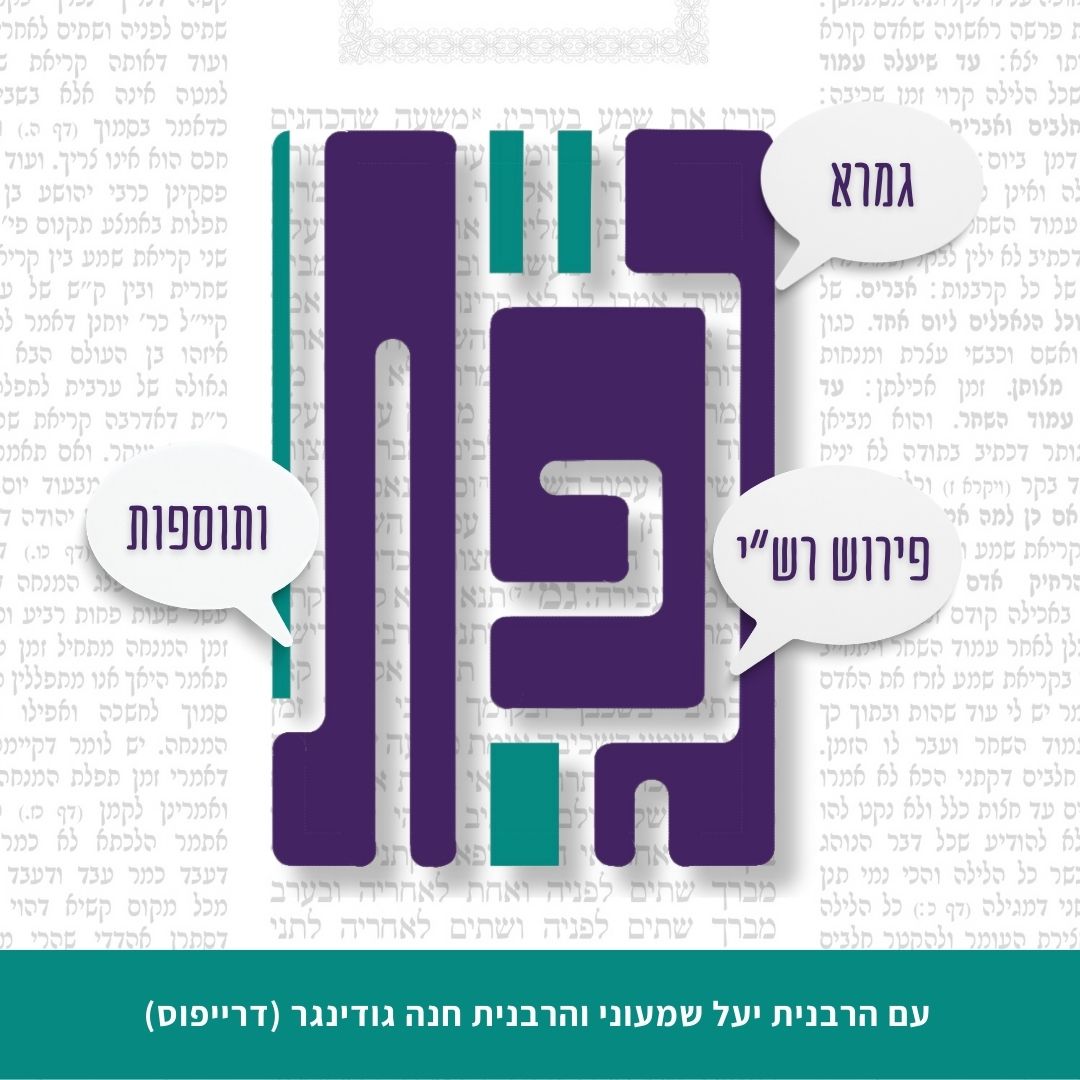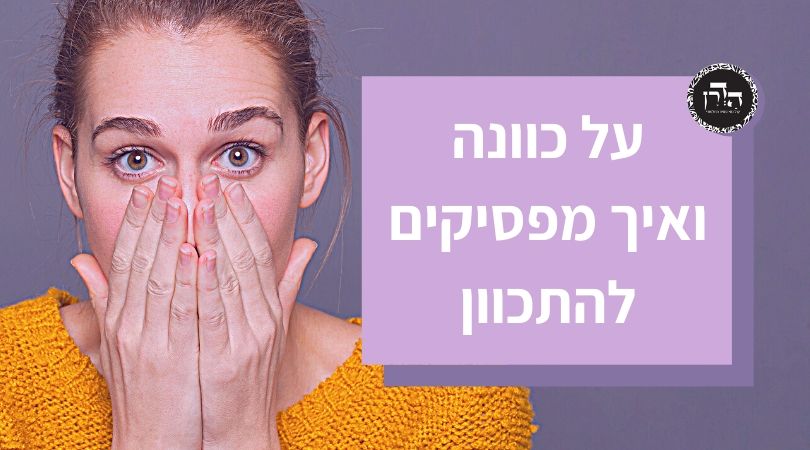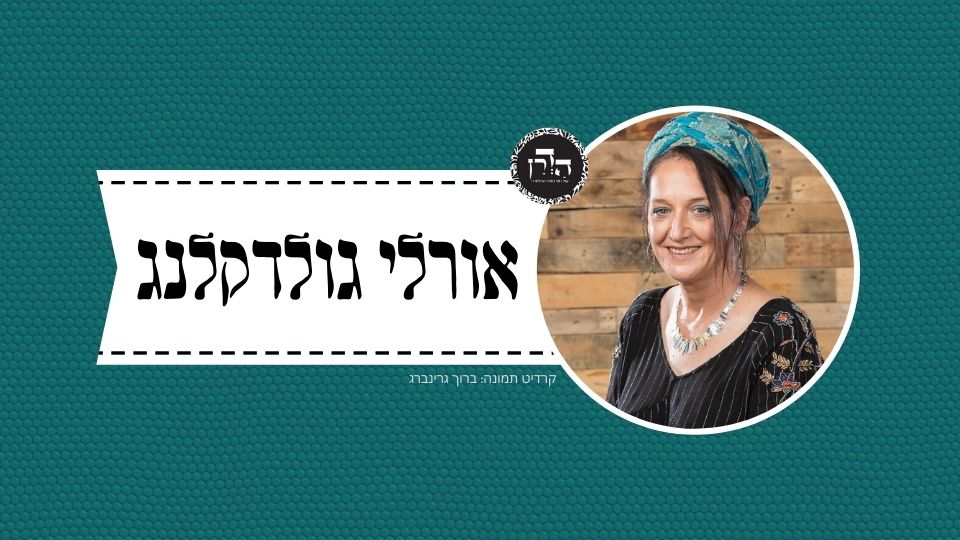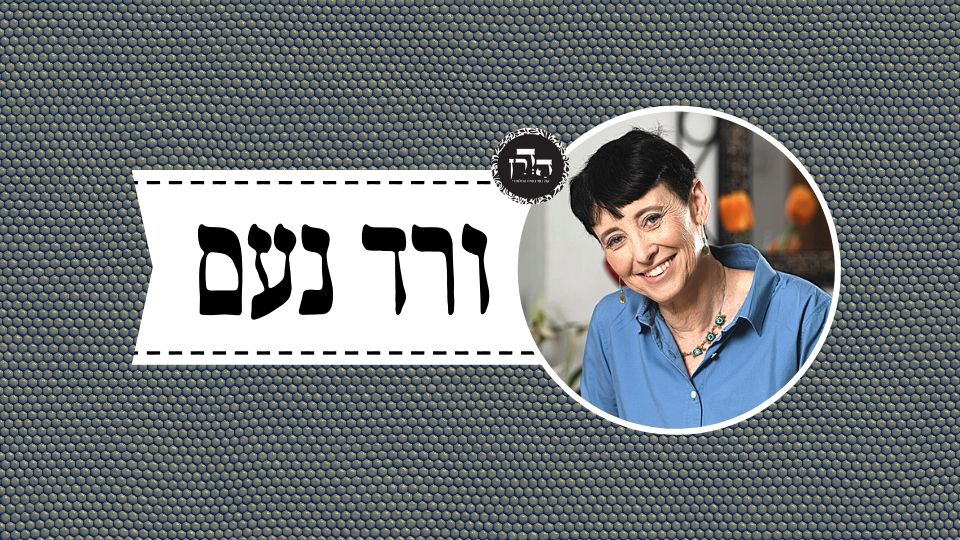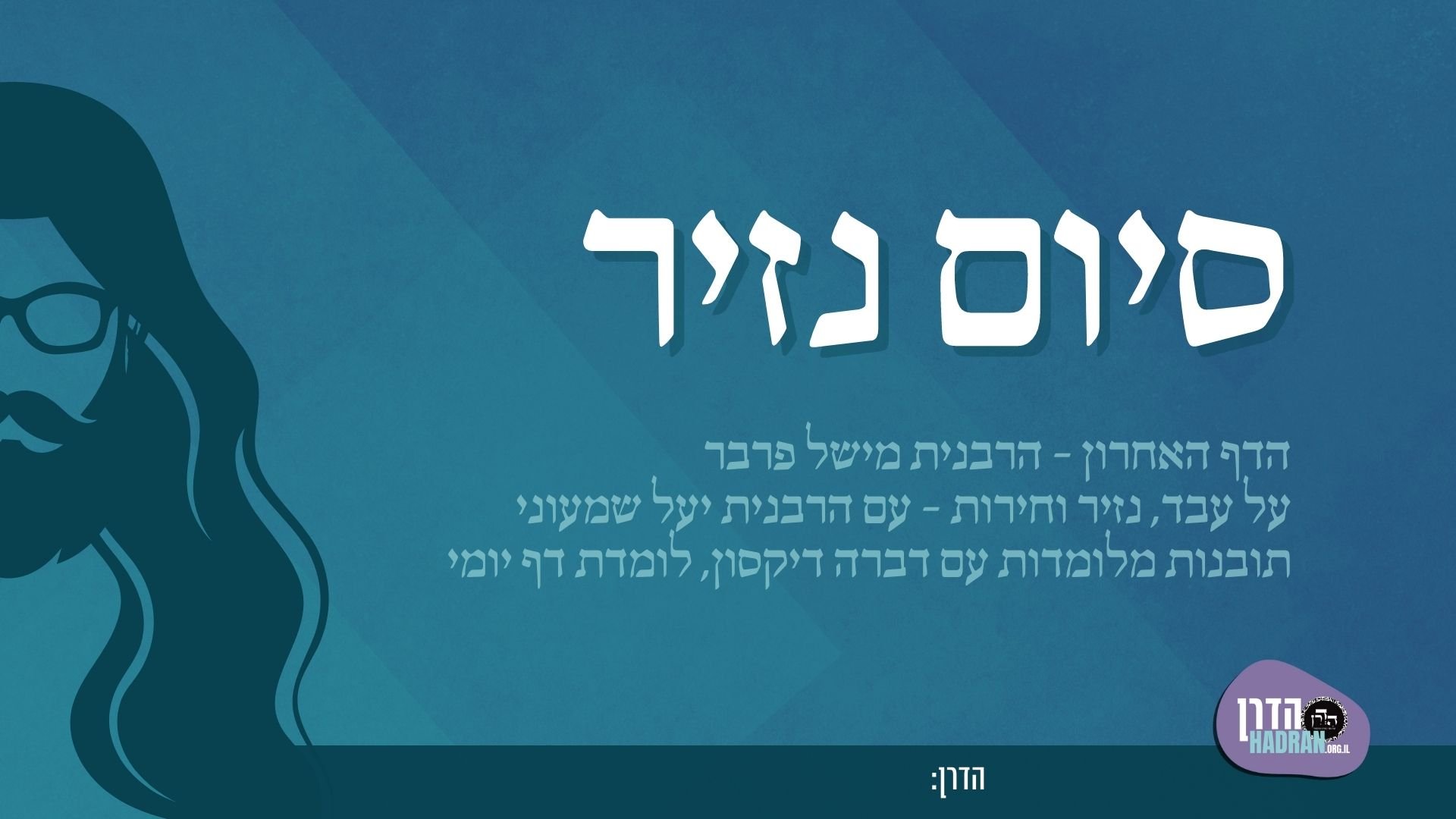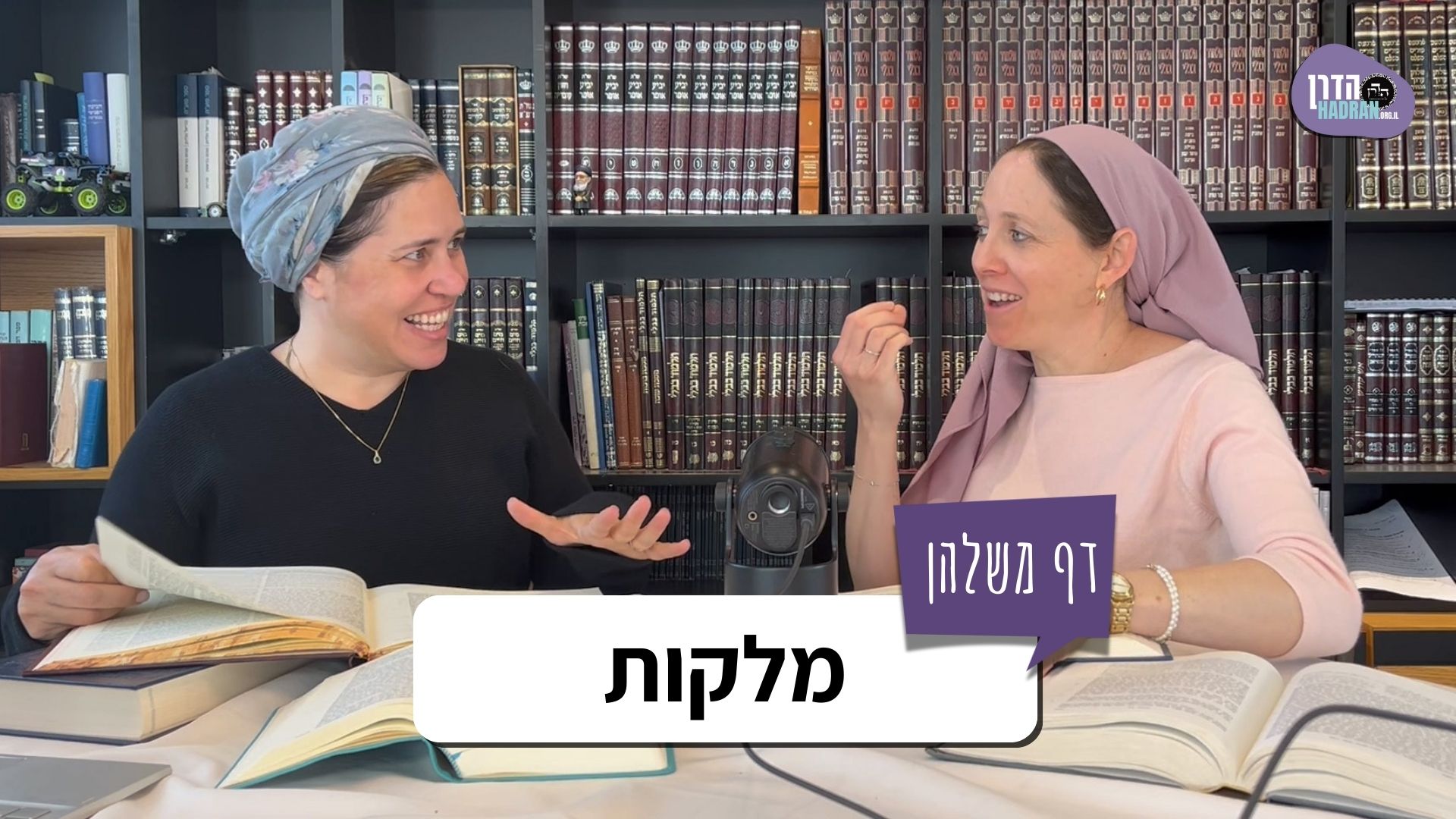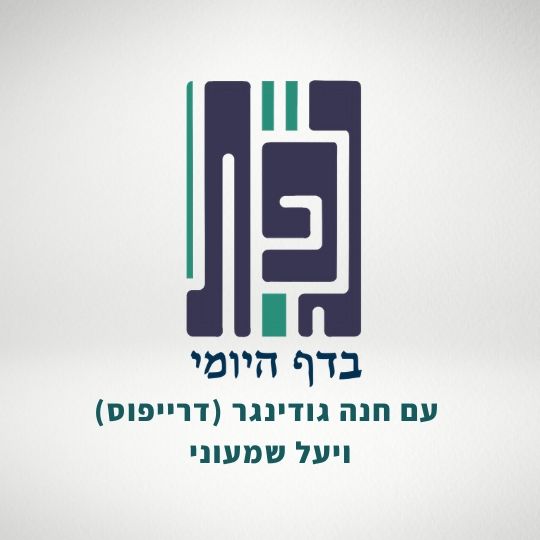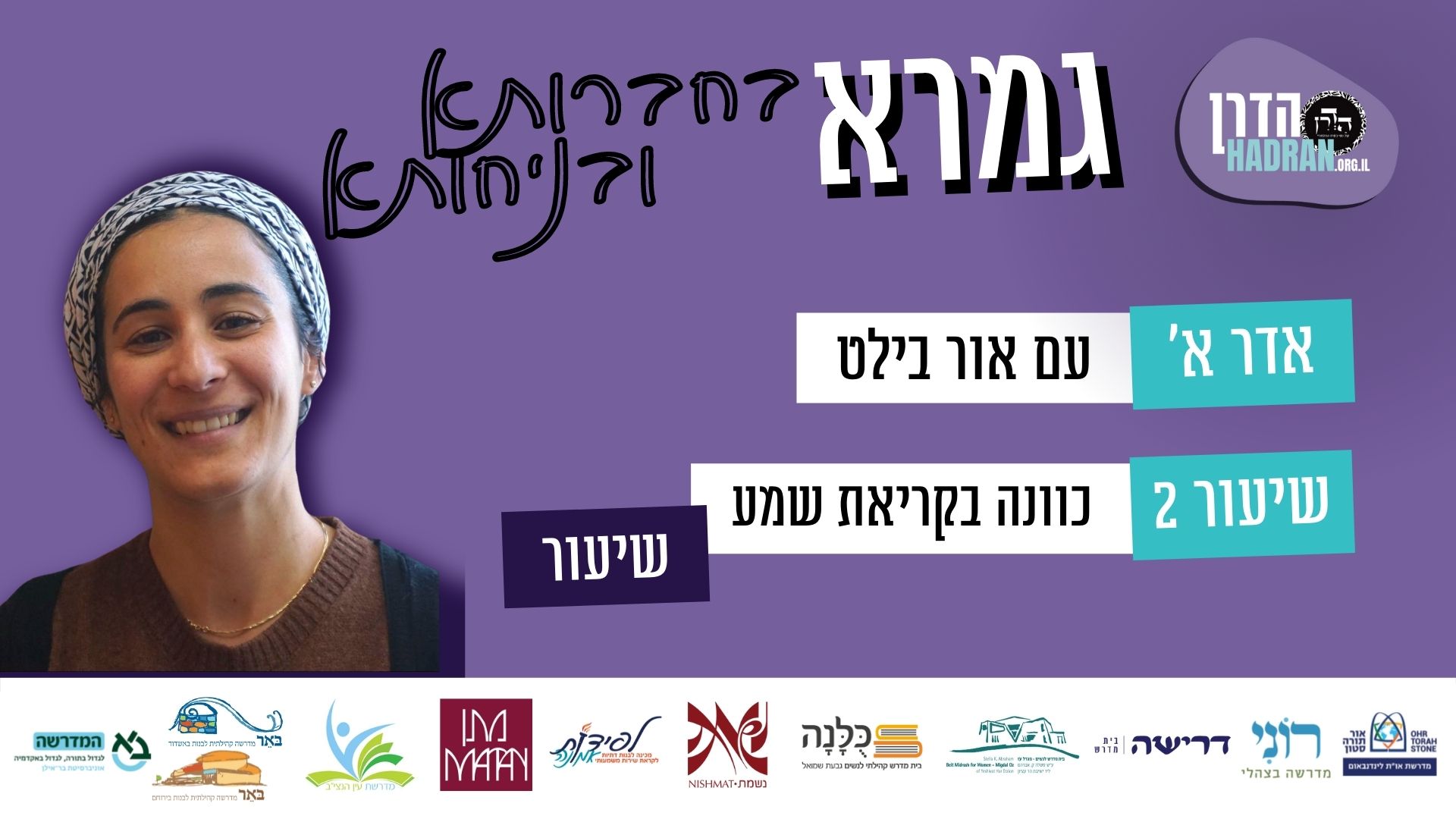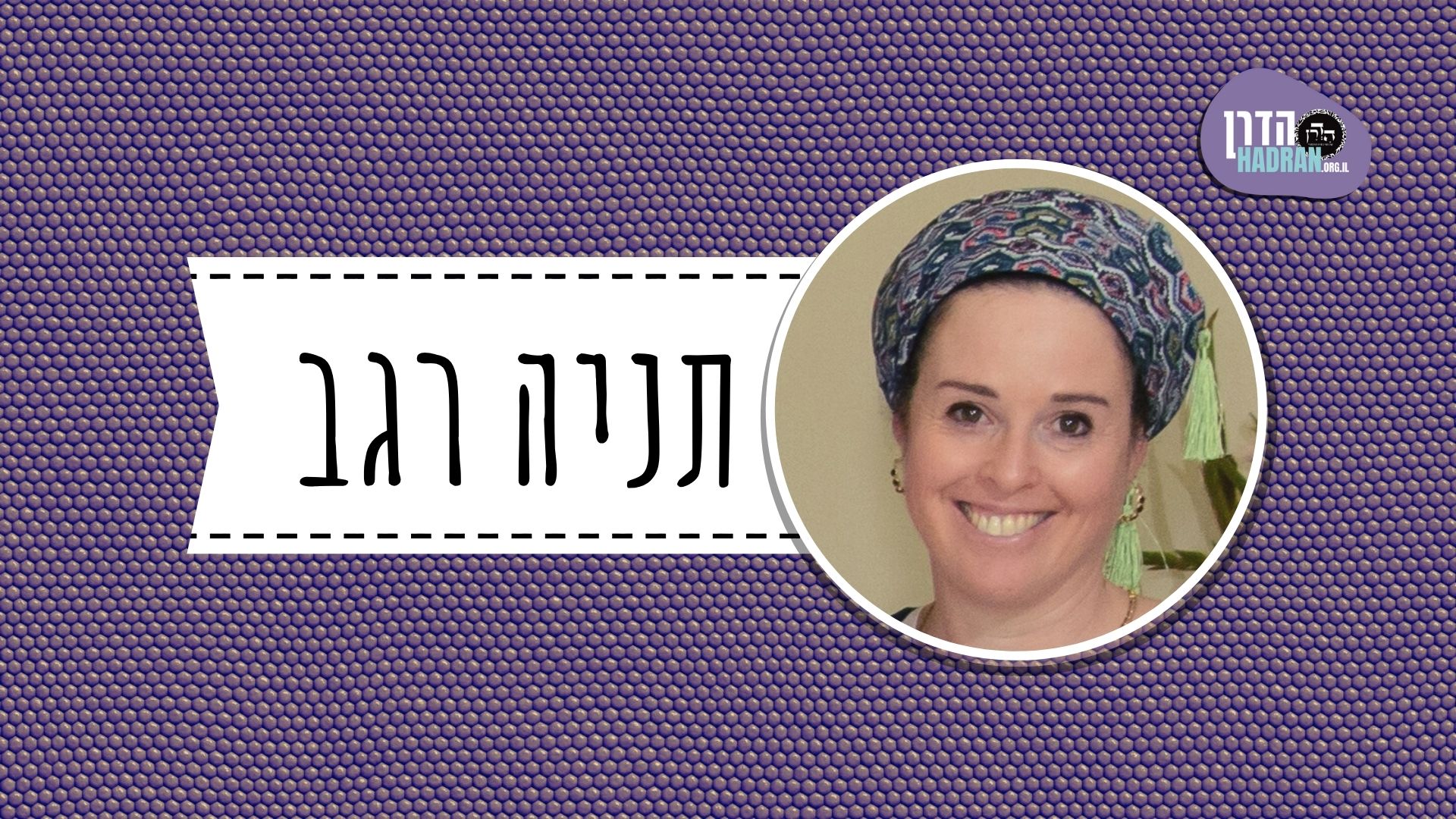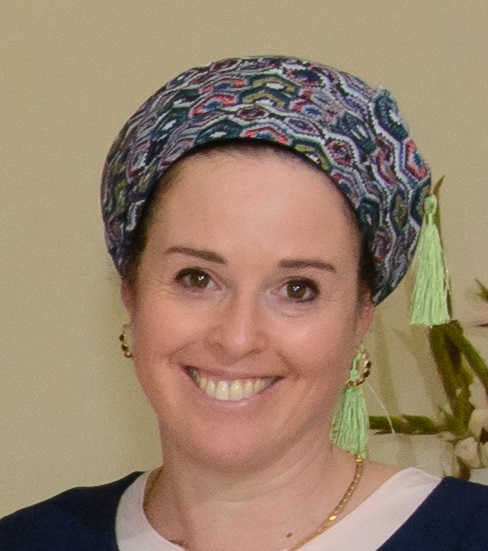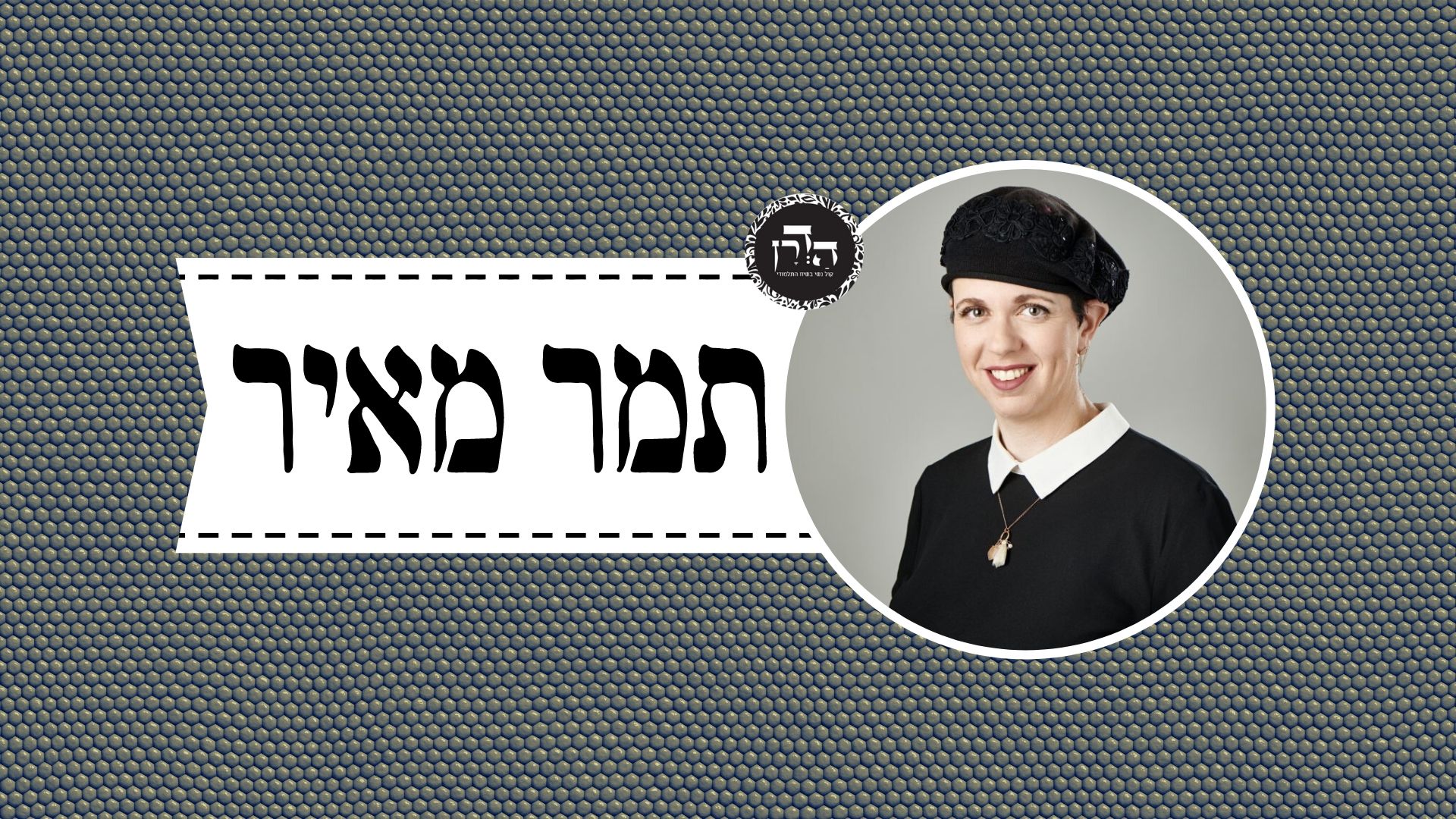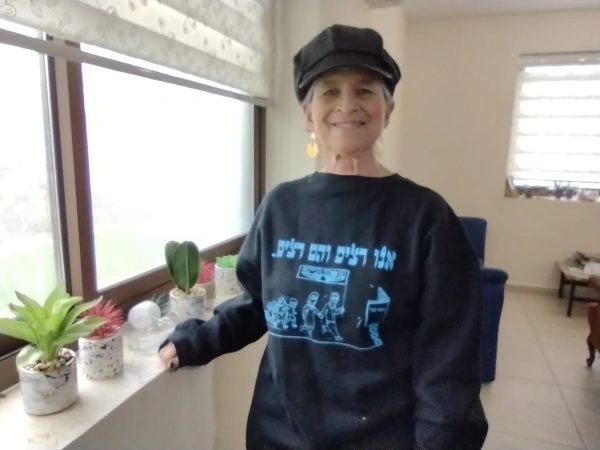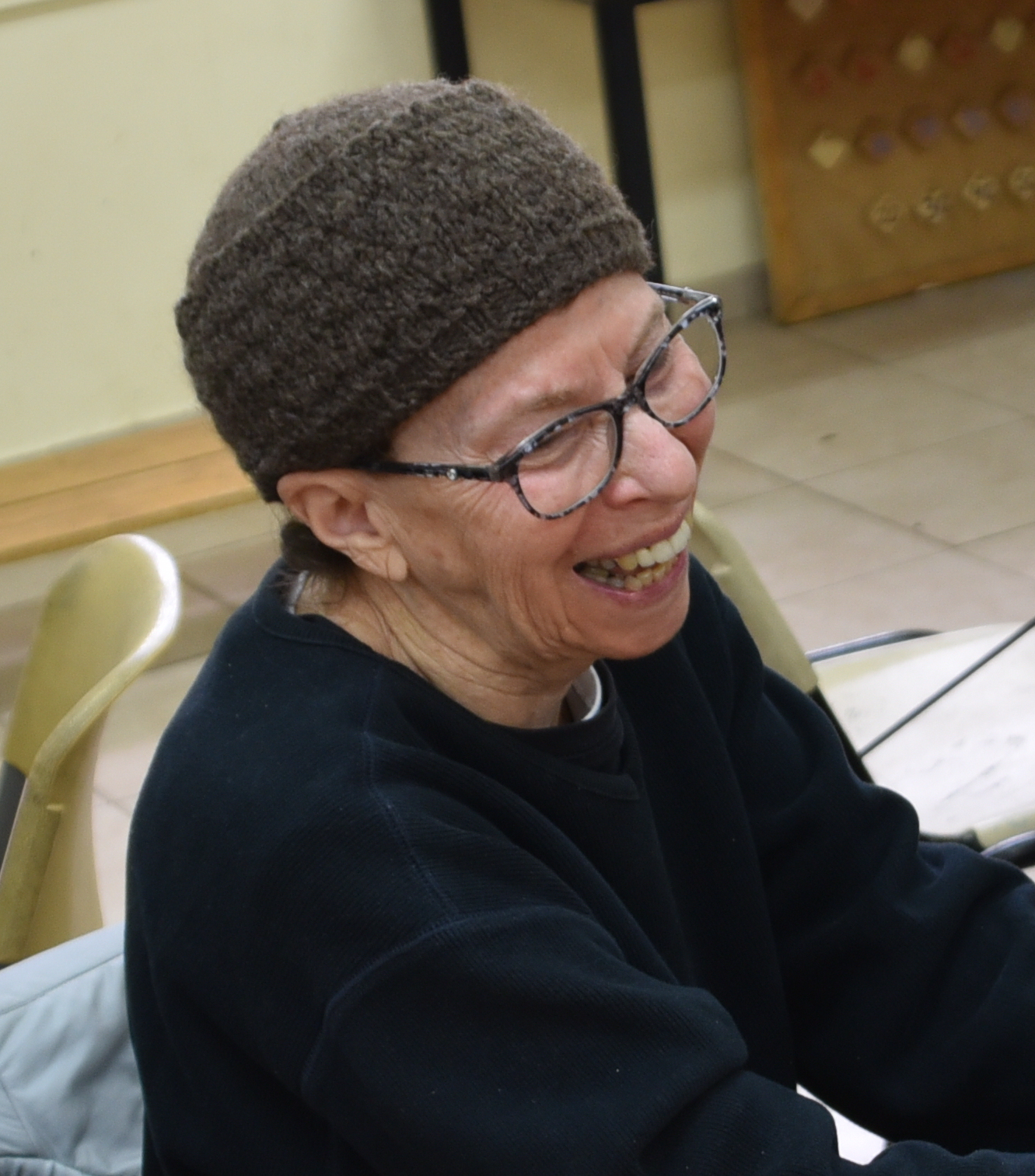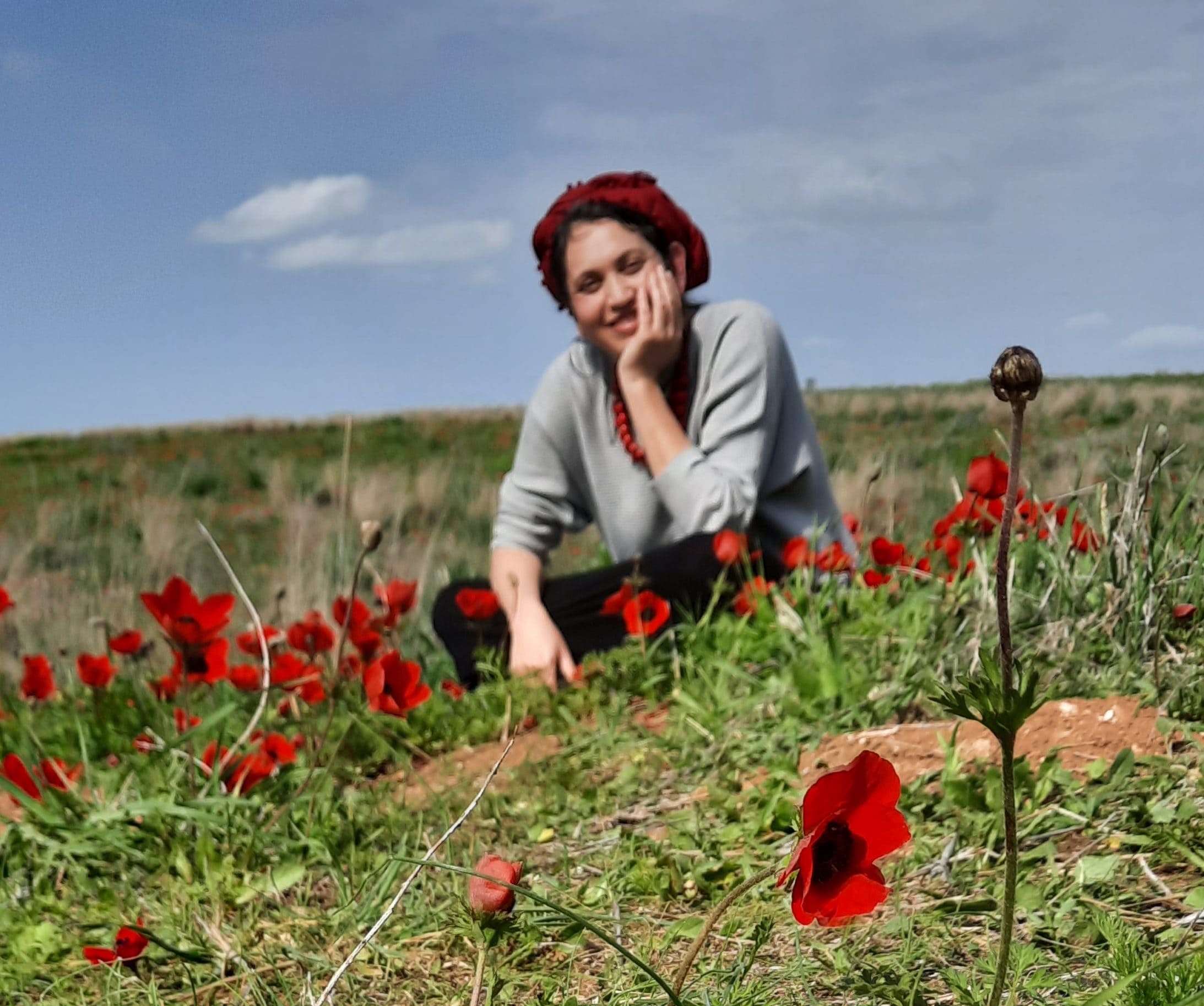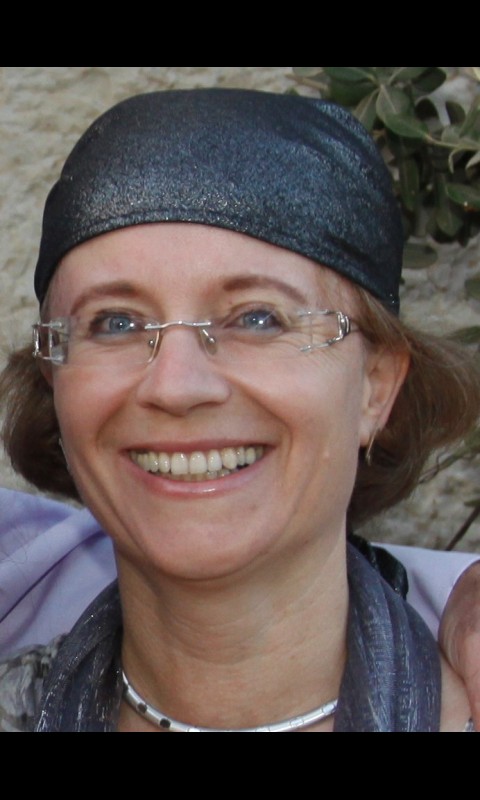איפה שמרו בויים במקדש – כמה שומרים היו? האם באמת ישנו הכהנים על הבגדים שלהם – האם מותר להינות מבגדי כהונה? והאם יש בעייה של איסור כלאים? האם אסור ללבוש בגדי כהונה מחוץ למקדש? אם כן, איך לבש אותם שמעון הצדיק באירוע עם אלקסנדר מוקדון והשומרונים כשרצו להחריב את בית המקדש (יום הר גריזים)? בעניין המנעול בשירותים, מובא סיפור על רב ספרא ור’ אבא כשהיה רב ספרא בשירותים והזמין ר’ אבא להיכנס. למה? מובא הלכה בקשר לניקיון הכוס לפני ואחרי שתייה כדי שאחרים יוכלי לשתות מהכוס שלי לסכן את עצמם עם חיידקים שלך. ובגלל סיפור שקרה ומת תלמיד מצמא שלא רצה לנקות כוסו של רבו (משום כבודו), לומדים כמה הלכות חשובות בקשר לרב ותלמיד.
רוצה להקדיש שיעור?
כלים
העמקה
רוצה להבין מה באמת קורה מתחת לפני השטח של הסוגיה?
שיעורים, פודקאסטים והרחבות של מיטב המורות שלנו יפתחו לך עוד זוויות וכיווני חשיבה.
חדשה בלימוד הגמרא?
זה הדף הראשון שלך? איזו התרגשות עצומה! יש לנו בדיוק את התכנים והכלים שיעזרו לך לעשות את הצעדים הראשונים ללמידה בקצב וברמה שלך, כך תוכלי להרגיש בנוח גם בתוך הסוגיות המורכבות ומאתגרות.
פסיפס הלומדות שלנו
גלי את קהילת הלומדות שלנו, מגוון נשים, רקעים וסיפורים. כולן חלק מתנועה ומסע מרגש ועוצמתי.
תמיד כז
״פִּרְחֵי כְהוּנָּה״? אָמְרִי: אִין, הָתָם, דְּלָא מָטוּ לְמֶעְבַּד עֲבוֹדָה – קָרֵי לְהוּ ״רוֹבִים״, הָכָא, דְּמָטוּ לְהוּ לְמֶעְבַּד עֲבוֹדָה – קָרֵי לְהוּ ״פִּרְחֵי״.
the young men of the priesthood [pirḥei khehunna]? Is there a distinction between these different terms? The Sages say: Yes, there is a distinction. There, with regard to the priests who keep watch in the Chamber of Avtinas and in the Chamber of the Spark, the mishna is referring to priests who have not reached the age at which they are eligible to perform the Temple service, and therefore the tanna calls them young priests. The older priests would not keep watch, as they preferred to perform the Temple service. Here, with regard to the priests who sleep in the Chamber of the Hearth in order to be ready to perform the morning rites, the mishna is referring to priests who have reached the age at which they are eligible to perform the Temple service, and consequently the tanna calls them the young men of the priesthood.
תְּנַן הָתָם: בִּשְׁלֹשָׁה מְקוֹמוֹת הַכֹּהֲנִים שׁוֹמְרִים בְּבֵית הַמִּקְדָּשׁ: בְּבֵית אַבְטִינָס, וּבְבֵית הַנִּיצוֹץ, וּבְבֵית הַמּוֹקֵד.
§ We learned in a mishna elsewhere (Middot 1:1): The priests would keep watch in three places in the Temple courtyard: In the Chamber of Avtinas, and in the Chamber of the Spark, and in the Chamber of the Hearth.
וְהַלְוִיִּם בְּעֶשְׂרִים וְאֶחָד מְקוֹמוֹת: חֲמִשָּׁה – עַל חֲמִשָּׁה שַׁעֲרֵי הַר הַבַּיִת. אַרְבָּעָה – עַל אַרְבַּע פִּנּוֹתָיו מִבִּפְנִים. חֲמִשָּׁה – עַל חֲמִשָּׁה שַׁעֲרֵי עֲזָרָה. וְאַרְבָּעָה – עַל אַרְבַּע פִּנּוֹתָיו מִבַּחוּץ. אֶחָד – בְּלִשְׁכַּת הַקׇּרְבָּן, וְאֶחָד – בְּלִשְׁכַּת הַפָּרוֹכֶת, וְאֶחָד – אֲחוֹרֵי בֵּית הַכַּפּוֹרֶת.
And the Levites would keep watch in twenty-one places, as follows: Five upon the five gates of the Temple Mount; four upon the four corners of the Temple Mount, within the wall surrounding the Temple Mount; five upon the five gates of the Temple courtyard, and four upon the four corners of the Temple courtyard outside the courtyard wall, surrounding the Temple courtyard. One watch is observed in the Chamber of the Offering, where animals that had been checked for blemishes were held in readiness for sacrifice; one watch is kept in the Chamber of the Curtain, where the Curtain separating the Sanctuary and the Holy of Holies was woven; and finally, one watch is kept behind the Chamber of the Ark Cover, in the area between the Holy of Holies and the western wall of the Temple Mount.
מְנָהָנֵי מִילֵּי? אָמַר רַב יְהוּדָה מִסּוּרָא, וְאָמְרִי לַהּ בְּמַתְנִיתָא תָּנָא, דִּכְתִיב: ״לַמִּזְרָח הַלְוִיִּם שִׁשָּׁה לַצָּפוֹנָה לְוִיִּם אַרְבָּעָה לַנֶּגְבָּה לְוִיִּם אַרְבָּעָה וְלָאֲסֻפִּים שְׁנַיִם שְׁנָיִם לַפַּרְבָּר לַמַּעֲרָב אַרְבָּעָה לַמְסִלָּה שְׁנַיִם לַפַּרְבָּר״.
With regard to these twenty-one places where the Levites keep watch, the Gemara asks: From where are these matters derived? Rav Yehuda of Sura said, and some say that it was taught in a baraita: This is derived as it is written with regard to the Levites assigned by David to serve as gatekeepers upon the future construction of the Temple: Eastward were six Levites, northward four Levites, southward four Levites, and for the Asuppim two and two. For the Parbar westward, four at the causeway, and two at the Parbar (see I Chronicles 26:17–18).
אָמְרִי: הָנֵי עֶשְׂרִים וְאַרְבְּעָה הָווּ! אָמַר אַבָּיֵי, הָכִי קָאָמַר: לָאֲסֻפִּים – שְׁנַיִם (שְׁנַיִם).
The Sages say that if these verses are the source for the twenty-one places in which the Levites keep watch, that is difficult, as these watches enumerated in the verse are twenty-four in total. Abaye said: This is what the verse is saying: “For the Asuppim two,” and they are always only two. It is not uncommon for a verse to repeat a word for emphasis in this manner, especially at the end of a verse.
אַכַּתִּי, עֶשְׂרִין וּתְרֵי הָווּ! הַיְאךְ דְּפַרְבָּר – חַד הֲוָה, וְאַחֲרִינָא, בְּצַוְותָּא הוּא דְּאָזֵיל וְיָתֵיב גַּבֵּיהּ – מִשּׁוּם דְּקָאֵי אַבָּרַאי.
The Gemara objects: Even if two locations are removed from the list, according to the verse there are still twenty-two watches, rather than twenty-one. The Gemara explains: That watch, which was situated at the Parbar, was composed of only one watchman, and as for the other Levite mentioned in the verse, it was merely to serve as company that he went and sat with the watchman, due to the fact that the Parbar was situated on the outer side and was isolated from the other watches.
מַאי ״לַפַּרְבָּר״? אָמַר רַבָּה בַּר רַב שֵׁילָא: כְּמַאן דְּאָמַר ״כְּלַפֵּי בַּר״.
The Gemara asks: What is the meaning of the term “at the Parbar [laParbar]” (I Chronicles 26:18)? Rabba bar Rav Sheila said: This term is a contraction of two Aramaic words, and it is like one who says: Toward the outside [kelapei bar].
וְאִיבָּעֵית אֵימָא: לְעוֹלָם עֶשְׂרִים וְאַרְבְּעָה, כְּדִכְתִיב. תְּלָתָא מִינַּיְיהוּ – דְּכֹהֲנִים, וְעֶשְׂרִין וְחַד – דִּלְוִיִּם.
The Gemara presents an alternative answer to the question with regard to the verse: And if you wish, say instead that actually there are twenty-four watches, and the verse may be interpreted literally as it is written. Three of them are the watches kept by the priests, and the remaining twenty-one are the watches kept by the Levites.
וְהָא הָכָא, לְוִיִּם הוּא דִּכְתִיב! כְּרַבִּי יְהוֹשֻׁעַ בֶּן לֵוִי, דְּאָמַר רַבִּי יְהוֹשֻׁעַ בֶּן לֵוִי: בְּעֶשְׂרִים וְאַרְבָּעָה מְקוֹמוֹת נִקְרְאוּ כֹּהֲנִים לְוִיִּם, וְזֶה אֶחָד מֵהֶן – ״וְהַכֹּהֲנִים הַלְוִיִּם בְּנֵי צָדוֹק״.
The Gemara asks: But isn’t it written here in the verse that all twenty-four watches are kept by the Levites? The Gemara answers: This interpretation is in accordance with the opinion of Rabbi Yehoshua ben Levi, as Rabbi Yehoshua ben Levi said: In twenty-four places in the Bible the priests are called Levites, and this is one of them: “But the priests the Levites, the sons of Zadok, that kept the charge of My Sanctuary when the children of Israel went astray from Me, they shall come near to Me to serve Me” (Ezekiel 44:15).
חֲמִשָּׁה – עַל חֲמִשָּׁה שַׁעֲרֵי הַר הַבַּיִת, וְאַרְבָּעָה – עַל אַרְבָּעָה פִּנּוֹתָיו מִתּוֹכוֹ. חֲמִשָּׁה – עַל חֲמִשָּׁה שַׁעֲרֵי עֲזָרָה, וְאַרְבָּעָה – עַל אַרְבָּעָה פִּנּוֹתָיו מִבַּחוּץ. מַאי שְׁנָא הַר הַבַּיִת דְּעָבְדִינַן מִתּוֹכוֹ, וּמַאי שְׁנָא עֲזָרָה דְּעָבְדִינַן מִבַּחוּץ?
The mishna (Middot 1:1) teaches that five watches are kept upon the five gates of the Temple Mount, and four watches are kept upon the four corners of the Temple Mount within the Temple Mount wall. Five watches are kept upon the five gates of the Temple courtyard, and four are kept upon the four corners of the Temple courtyard outside the courtyard wall, on the Temple Mount. The Gemara asks: What is different with regard to the Temple Mount that we perform the watch within the walls, and what is different with regard to the Temple courtyard that we perform the watch outside its walls?
אָמְרִי: הַר הַבַּיִת, דְּאִי תָּמַהּ וּבָעֵי מֵיתַב – יָתֵיב, אָמְרִינַן מִתּוֹכוֹ. עֲזָרָה, דְּאִי תָּמַהּ וּבָעֵי לְמֵיתַב – לָא מָצֵי יָתֵיב, דְּאָמַר מָר: אֵין יְשִׁיבָה בָּעֲזָרָה אֶלָּא לְמַלְכֵי בֵית דָּוִד בִּלְבַד, אָמְרִינַן מִבַּחוּץ.
The Sages say: With regard to the watches on the Temple Mount, if the watchman tires and wants to sit down, he may sit down, as it is permitted to sit on the Temple Mount. Therefore, we say that the watch is kept within the Temple Mount. By contrast, if a watch is observed in the Temple courtyard, even if the watchman tires and wants to sit down, he may not sit down, as the Master said: Sitting in the Temple courtyard is permitted only for kings of the house of David. Therefore, we say that the watch is kept outside the walls of the Temple courtyard, so that the watchman may sit down if he wishes.
אָמַר מָר: חֲמִשָּׁה עַל חֲמִשָּׁה שַׁעֲרֵי עֲזָרָה. וַחֲמִשָּׁה שְׁעָרִים הוּא דְּהָוֵי בַּעֲזָרָה?! וּרְמִינְהִי שִׁבְעָה שְׁעָרִים הָיוּ בָּעֲזָרָה, שְׁלֹשָׁה בַּצָּפוֹן, וּשְׁלֹשָׁה בַּדָּרוֹם, וְאֶחָד בַּמִּזְרָח!
The Master said above that five watches are kept upon the five gates of the Temple courtyard. The Gemara asks: But was it only five gates that were constructed in the walls of the Temple courtyard? And the Gemara raises a contradiction from a mishna (Middot 1:4): There were seven gates in the Temple courtyard: Three in the north, and three in the south, and one in the east.
אָמַר אַבָּיֵי: תְּרֵי מִינַּיְיהוּ לָא צְרִיכִי שִׁימּוּר. רָבָא אָמַר: תַּנָּאֵי הִיא. דְּתַנְיָא: אֵין פּוֹחֲתִין מִשְּׁלֹשָׁה עָשָׂר גִּזְבָּרִין וּמִשִּׁבְעָה אֲמַרְכָּלִין. רַבִּי נָתָן אוֹמֵר: אֵין פּוֹחֲתִין מִשְּׁלֹשָׁה עָשָׂר גִּזְבָּרִין, כְּנֶגֶד שְׁלֹשָׁה עָשָׂר שְׁעָרִים. דַּל חַמְשָׁה דְּהַר הַבַּיִת – פָּשׁוּ לְהוּ תְּמָנְיָא דַּעֲזָרָה. אַלְמָא, אִיכָּא תַּנָּא דְּאָמַר תְּמָנְיָא הָווּ, וְאִיכָּא תַּנָּא דְּאָמַר שִׁבְעָה, וְאִיכָּא תַּנָּא דְּאָמַר חַמְשָׁה הָווּ.
Abaye said: Although there were seven gates, two of them, the gate to the Chamber of the Spark and the gate to the Chamber of the Hearth, did not require a watch of the Levites, as the priests kept watch there. Rava said: The number of gates is a dispute between tanna’im, as it is taught in a baraita: There must be no fewer than thirteen treasurers and seven trustees appointed over the Temple administration. Rabbi Natan says: There must be no fewer than thirteen treasurers, corresponding to the thirteen gates. Remove from the total of thirteen gates the five gates of the Temple Mount, and there remain eight gates to the Temple courtyard. Evidently, there is a tanna who said that there were eight gates, and there is a tanna who said that there were seven gates, and there is also a tanna who said that there were five gates.
לֹא הָיוּ יְשֵׁנִים בְּבִגְדֵי קֹדֶשׁ כּוּ׳. שֵׁינָה הוּא דְּלָא, אֲבָל הִילּוּךְ – מְהַלְּכִים. שָׁמְעַתְּ מִינַּהּ: בִּגְדֵי כְהוּנָּה נִיתְּנוּ לֵיהָנוֹת בָּהֶן!
§ The mishna (25b) teaches that the priests would not sleep dressed in the sacred vestments; rather, they would remove them and place them beneath their heads. The Gemara infers from here that it is only sleep that is not permitted while a priest is dressed in the sacred vestments, lest he pass wind during his sleep. But with regard to wearing such vestments while the priests are awake and engaged in various activities, e.g., walking, they may walk about dressed in the vestments, even when they do not need to wear them for the Temple service. You may therefore conclude from the mishna that it is permitted to derive benefit from priestly vestments.
אָמְרִי: הוּא הַדִּין דַּאֲפִילּוּ הִילּוּךְ נָמֵי לָא, וְהָא דְּקָתָנֵי לֹא הָיוּ יְשֵׁנִים – מִשּׁוּם דְּבָעֵי לְמִיתְנֵא סֵיפָא: אֶלָּא פּוֹשְׁטִין וּמְקַפְּלִין וּמַנִּיחִין אוֹתָן תַּחַת רָאשֵׁיהֶן, קָתָנֵי רֵישָׁא נָמֵי: לֹא הָיוּ יְשֵׁנִים.
The Sages say that this inference is incorrect. The same is true of walking, as even walking while wearing the vestments is not permitted, and the reason that the tanna teaches specifically that the priests would not sleep dressed in the vestments is due to the fact that the tanna wanted to teach the latter clause: Rather, they would remove them and fold them, and then they would place them beneath their heads. Since the latter clause is referring specifically to sleeping, the tanna teaches in the former clause as well that the priests would not sleep dressed in the vestments.
וְהָא גּוּפַהּ קָא קַשְׁיָא: וּמַנִּיחִין אוֹתָן תַּחַת רָאשֵׁיהֶן – שְׁמַע מִינַּהּ בִּגְדֵי כְהוּנָּה נִיתְּנוּ לֵיהָנוֹת בָּהֶם! אֵימָא: נֶגֶד רָאשֵׁיהֶם.
The Gemara objects: But according to this interpretation, the mishna itself is difficult, as the mishna states: And they would place the priestly vestments beneath their heads, as a cushion. One may conclude from this statement that it is permitted to derive benefit from priestly vestments. The Gemara rejects this interpretation: Say that the mishna means that they would place the vestments next to their heads, not literally beneath them.
אָמַר רַב פָּפָּא, שְׁמַע מִינַּהּ: תְּפִילִּין מִן הַצַּד – שַׁרְיָין, וְלָא חָיְישִׁינַן דִּלְמָא מִיגַּנְדַּר וְנָפֵיל עֲלַיְיהוּ.
Rav Pappa said: One may conclude from this interpretation of the mishna that if one places phylacteries by the side of his head while he sleeps, they are in a permitted place. And we are not concerned that perhaps he will roll over in his sleep and fall upon them, which would degrade the phylacteries.
הָכִי נָמֵי מִסְתַּבְּרָא דִּכְנֶגֶד רָאשֵׁיהֶן, דְּאִי אָמְרַתְּ תַּחַת רָאשֵׁיהֶן, נְהִי דְּנִיתְּנוּ לֵיהָנוֹת בָּהֶן, תִּיפּוֹק לֵיהּ מִשּׁוּם אִיסּוּרָא דְכִלְאַיִם!
The Gemara comments: So too, it is reasonable to say that the mishna permits the vestments to be placed only next to their heads. As, if you say that the mishna permits the vestments to be placed literally beneath their heads, this is difficult. Granted that it is permitted to derive benefit from them, but one could derive that it is prohibited to sleep upon them due to the prohibition of diverse kinds of wool and linen. The priestly vestments contain both wool and linen, which is a prohibited mixture in every other context. The Torah specifically permits the priests to wear them while they are performing the Temple service, but this does not extend to using the vestments as a cushion while sleeping.
הָנִיחָא לְמַאן דְּאָמַר אַבְנֵטוֹ שֶׁל כֹּהֵן גָּדוֹל לֹא זֶהוּ אַבְנֵטוֹ שֶׁל כֹּהֵן הֶדְיוֹט. אֶלָּא לְמַאן דְּאָמַר אַבְנֵטוֹ שֶׁל כֹּהֵן הֶדְיוֹט זֶהוּ אַבְנֵטוֹ שֶׁל כֹּהֵן גָּדוֹל, מַאי אִיכָּא לְמֵימַר?
The Gemara explains the difficulty: If one maintains that the mishna permits the priests to place the vestments beneath their heads, this works out well according to the one who said that the belt of the High Priest is not the same as the belt of an ordinary priest. Although the belt of the High Priest was made of both wool and linen, the belt of ordinary priests, like the rest of their vestments, were made entirely of linen and did not contain diverse kinds. But according to the one who said that the belt of an ordinary priest is the same as the belt of the High Priest, what is there to say? Since the belt contained diverse kinds, how could the mishna possibly permit the priests to sleep upon their vestments?
וְכִי תֵּימָא: כִּלְאַיִם בַּעֲלִיָּה וּלְבִישָׁה הוּא דְּאָסוּר, אֲבָל מֵימַךְ תּוּתֵיהּ שַׁפִּיר דָּמֵי, וְהָתַנְיָא: ״לֹא יַעֲלֶה עָלֶיךָ״ – אֲבָל אַתָּה מַצִּיעוֹ תַּחְתֶּיךָ. אֲבָל אָמְרוּ חֲכָמִים: אָסוּר לַעֲשׂוֹת כֵּן, שֶׁמָּא תִּיכָּרֵךְ נִימָא אַחַת עַל בְּשָׂרוֹ.
And if you would say that with regard to diverse kinds it is only placing the garment upon oneself or wearing it that is prohibited, but as for spreading it beneath you, it is permitted, this explanation is difficult. But isn’t it taught in a baraita: The verse states: “Neither shall there come upon you a garment of diverse kinds” (Leviticus 19:19). One should infer as follows: But you may spread a garment of diverse kinds beneath you, in order to lie upon it. The baraita continues: This is the halakha by Torah law, but the Sages said that it is prohibited to do so, lest a single fiber wrap itself upon his flesh, which would cause him to be in transgression of the Torah prohibition. Accordingly, the priests should not be permitted to place vestments made of diverse kinds beneath their heads.
וְכִי תֵּימָא דְּמַפְסֵיק מִידֵּי, וְהָאָמַר רַבִּי שִׁמְעוֹן, אָמַר רַבִּי יְהוֹשֻׁעַ בֶּן לֵוִי, אָמַר רַבִּי יוֹסֵי בֶּן שָׁאוּל מִשּׁוּם קְהָלָא קַדִּישָׁא שֶׁבִּירוּשָׁלַיִם: אֲפִילּוּ עֶשֶׂר מַצָּעוֹת זוֹ עַל גַּב זוֹ, וְכִלְאַיִם תַּחְתֵּיהֶן – אָסוּר לִישַׁן עֲלֵיהֶן. אֶלָּא שְׁמַע מִינַּהּ, נֶגֶד רָאשֵׁיהֶן.
And if you would say that the priests could place the vestments beneath their heads in such a manner that something separates between their flesh and the vestments, as the fibers could not wrap themselves upon their flesh, such conduct would still be prohibited. Doesn’t Rabbi Shimon say that Rabbi Yehoshua ben Levi says that Rabbi Yosei ben Shaul says in the name of the holy community in Jerusalem: Even if there are ten mattresses piled one atop the other and a garment of diverse kinds is placed beneath all of them, it is prohibited to sleep upon them? This is because the rabbinic decree applies equally to all cases, irrespective of whether the concern that motivated the decree exists. Rather, one may conclude from here that the mishna permits the vestments to be placed only next to their heads.
וְאִי בָּעֵית אֵימָא: בְּאוֹתָן שֶׁאֵין בָּהֶן כִּלְאַיִם. רַב אָשֵׁי אָמַר: בִּגְדֵי כְהוּנָּה קָשִׁין הֵן, דְּאָמַר רַב הוּנָא בְּרֵיהּ דְּרַב יְהוֹשֻׁעַ: הָא נַמְטָא גַּמְדָּא דְּנַרֶשׁ – שַׁרְיָא.
The Gemara suggests alternative solutions: And if you wish, say instead that the mishna does permit the priests to place the vestments beneath their heads, as it is referring to those vestments that do not contain diverse kinds. Rav Ashi says: The mishna permits the priests to place even the belt that contains diverse kinds beneath their heads. This is because the priestly vestments, and specifically the belt, are stiff, and therefore it is not prohibited to lie on them. As Rav Huna, son of Rabbi Yehoshua, said: This stiff felt [namta], which is manufactured in the city of Neresh and is made of diverse kinds, is permitted. The prohibition of diverse kinds applies only to items that are similar to garments, which one derives pleasure from wearing. A stiff garment does not provide warmth, and is therefore not included in this prohibition.
תָּא שְׁמַע: בִּגְדֵי כְהוּנָּה, הַיּוֹצֵא בָּהֶן לִמְדִינָה – אָסוּר. וּבַמִּקְדָּשׁ, בֵּין בִּשְׁעַת עֲבוֹדָה וּבֵין שֶׁלֹּא בִּשְׁעַת עֲבוֹדָה – מוּתָּר. מִפְּנֵי שֶׁבִּגְדֵי כְהוּנָּה נִיתְּנוּ לֵיהָנוֹת בָּהֶן. שְׁמַע מִינַּהּ.
The Gemara returns to discuss the earlier dilemma, of whether it is permitted to derive benefit from priestly vestments. Come and hear a baraita: With regard to the priestly vestments, the act of one who leaves the Temple dressed in them and goes out to the country, i.e., outside the Temple, is prohibited. But in the Temple, both at the time of the Temple service and not at the time of the service, wearing the vestments is permitted, as it is permitted to derive benefit from the priestly vestments. The Gemara concludes: One may conclude from the baraita that it is permitted to derive benefit from the priestly vestments.
וּבַמְּדִינָה לָא? וְהָתַנְיָא: בְּעֶשְׂרִים וְאֶחָד בּוֹ – יוֹם הַר גְּרִיזִים, דְּלָא לְמִיסְפַּד, כִּדְאִיתָא בְּיוֹמָא פֶּרֶק ״בָּא לוֹ כֹּהֵן גָּדוֹל קָרוֹב וְכוּ׳״?!
According to the baraita, the priestly vestments may not be worn outside the Temple. The Gemara asks: And is it not permitted to wear the priestly vestments in the rest of the country, outside the Temple? But isn’t it taught in a baraita, in connection with a date mentioned in Megillat Ta’anit: On the twenty-first of Tevet, this is the day of Mount Gerizim, which was established as a festive day, and therefore it is not permitted to eulogize. This date was established as a festive day because the Temple was saved from destruction on that day, due to the actions of Shimon HaTzaddik, the High Priest, as it is related in tractate Yoma (69a), in the seventh chapter, which begins: The High Priest came close to read the Torah.
עַד אִיבָּעֵית אֵימָא: רְאוּיִין הֵן לְבִגְדֵי כְהוּנָּה.
The baraita relates that Shimon HaTzaddik went to greet Alexander the Macedonian wearing the priestly vestments. The Gemara in Yoma cites the complete baraita, up to the Gemara’s explanation as to why Shimon HaTzaddik wore the priestly vestments outside the Temple: If you wish, say that Shimon HaTzaddik did not wear consecrated priestly vestments. Rather, he wore garments that were fit to be priestly vestments, i.e., they were made of the same material and design.
וְאִי בָּעֵית אֵימָא: ״עֵת לַעֲשׂוֹת לַה׳ הֵפֵרוּ תּוֹרָתֶךָ״.
And if you wish, say instead that he did in fact wear consecrated priestly vestments. Although this is usually prohibited, in this instance it was permitted due to the principle: “It is time to act for the Lord; they have nullified Your Torah” (Psalms 119:126). In times of great need, such as when one seeks to prevent the destruction of the Temple, it is permitted to violate the halakha for the sake of Heaven, and the actions of Shimon HaTzaddik indeed averted the destruction.
אֵירַע קֶרִי בְּאֶחָד מֵהֶן [וְכוּ׳].
§ The mishna teaches (25b): If a seminal emission befell one of the priests and rendered him ritually impure, he would leave the Chamber of the Hearth and he would walk through the circuitous passage that extended beneath the Temple, as he could not pass through the Temple courtyard, due to his impurity.
מְסַיַּיע לֵיהּ לְרַבִּי יוֹחָנָן, דְּאָמַר: מְחִילּוֹת לֹא נִתְקַדְּשׁוּ. בַּעַל קֶרִי מִשְׁתַּלֵּחַ חוּץ לִשְׁנֵי מַחֲנוֹת.
The Gemara notes that this mishna supports the opinion of Rabbi Yoḥanan, who says: The tunnels beneath the Temple Mount were not sanctified, neither with the sanctity of the Temple courtyard nor with the sanctity of the Temple Mount. The Gemara cites a related statement of Rabbi Yoḥanan: A man who experienced a seminal emission is sent outside of two camps, the camp of the Divine Presence and the camp of the Levites. Accordingly, he may not remain in the Temple courtyard, which has the status of the camp of the Divine Presence, nor on the Temple Mount, which has the status of the camp of the Levites.
וְהַנֵּרוֹת דּוֹלְקִין מִכָּאן וּמִכָּאן כּוּ׳. רַב סָפְרָא הֲוָה יָתֵיב בְּבֵית הַכִּסֵּא, אֲתָא רַבִּי אַבָּא נְחַר לֵיהּ. אֲמַר לֵיהּ: לֵיעוּל מָר!
The mishna teaches: And the lamps were burning on this side and on that side of the passage…and there was a bathroom of honor in the Chamber of Immersion. This was its honor: If one found the door closed, he would know that there was a person there, and he would wait for him to exit before entering. The Gemara relates: Rav Safra was sitting in the bathroom when Rabbi Abba came along. Since there was no door, Rabbi Abba coughed outside to alert anyone within of his presence and thereby inquire whether he could enter. Rav Safra said to Rabbi Abba: Enter, Master, and Rabbi Abba therefore entered the bathroom.
בָּתַר דְּנָפֵיק, אֲמַר לֵיהּ רַבִּי אַבָּא: עַד כָּאן לָא סְלֵיקְתְּ לְשֵׂעִיר, גְּמַרְתְּ מִילֵּי דְּשֵׂעִיר?! לָאו הָכִי תְּנַן: מְצָאוֹ נָעוּל – בְּיָדוּעַ שֶׁיֵּשׁ שָׁם אָדָם! לְמֵימְרָא דְּלָא מִיבְּעֵי לֵיהּ לְמֵיעַל!
When he came out, Rabbi Abba said to Rav Safra: Until now, although you have traveled widely, you have never entered Seir, the land of the Edomites, who behave immodestly. Nevertheless, you have learned the ways of Seir. Didn’t we learn this in the mishna: If one found the door closed, it was known that there was a person there, and one would wait for him to exit before entering. This serves to say that a person should not enter the bathroom while another person is inside. Therefore, Rav Safra should not have told Rabbi Abba to enter.
וְרַב סָפְרָא סָבַר: דִּלְמָא מְסוּכָּן הוּא. כִּדְתַנְיָא, רַבָּן שִׁמְעוֹן בֶּן גַּמְלִיאֵל אוֹמֵר: עַמּוּד הַחוֹזֵר – מֵבִיא אֶת הָאָדָם לִידֵי הִדְרוֹקָן, סִילוֹן הַחוֹזֵר – מֵבִיא אֶת הָאָדָם לִידֵי יֵרָקוֹן.
The Gemara explains that Rav Safra told Rabbi Abba to enter because he thought: Perhaps Rabbi Abba is in danger. Rav Safra was concerned that if Rabbi Abba waited for him to exit, Rabbi Abba might jeopardize his health, as it was taught in a baraita that Rabban Shimon ben Gamliel says: A column of feces that is held back, because one refrains from relieving himself, causes a person to suffer from edema [hidrokan]. A stream of urine that is held back causes a person to suffer from jaundice [yerakon].
אֲמַר לֵיהּ רַב לְחִיָּיא בְּרֵיהּ, וְכֵן אֲמַר לֵיהּ רַב הוּנָא לְרַבָּה בְּרֵיהּ: חַשֵּׁיךְ, תַּקֵּין נַפְשָׁךְ, וּקְדֵים. תַּקֵּין נַפְשָׁךְ – כִּי הֵיכִי דְּלָא תִּרְחַק. תּוּב וְגַלִּי. כַּסִּי וְקוּם.
Rav said to his son Ḥiyya, and likewise Rav Huna said to his son Rabba: Relieve yourself when it gets dark, and relieve yourself before daybreak, even if you have no particular need to do so. The reason is that the streets are mostly empty at these times, and one can relieve himself near his home without concern that he might be seen. This is important, so that you will not have to relieve yourself during the day, when the streets are full, and you will be compelled to retain your feces while you distance yourself, which is liable to jeopardize your health. Furthermore, when relieving yourself, you should behave modestly. Sit down first and only then uncover yourself; afterward, cover yourself first and only then stand up.
שְׁטוֹף וּשְׁתִי. [שְׁטוֹף] וְאַחֵית. וּכְשֶׁאַתָּה שׁוֹתֶה מַיִם – שְׁפוֹךְ מֵהֶן, וְאַחַר כָּךְ תֵּן לְתַלְמִידֶךָ.
With regard to drinking, these amora’im instructed their sons: When you drink wine, rinse the cup first and only then drink from it; after you drink, rinse the cup and only then set it back in its place. But when you drink water, it is not necessary to rinse the cup afterward; rather, pour out some of the water to rinse the rim of the cup, and afterward you may give the cup to your student, if he wants to drink.
כִּדְתַנְיָא: לֹא יִשְׁתֶּה אָדָם מַיִם וְיִתֵּן לְתַלְמִידוֹ, אֶלָּא אִם כֵּן שָׁפַךְ מֵהֶן. וּמַעֲשֶׂה בְּאֶחָד שֶׁשָּׁתָה מַיִם וְלֹא שָׁפַךְ מֵהֶן, וְנָתַן לְתַלְמִידוֹ, וְאוֹתוֹ תַּלְמִיד אִיסְטְנִיס הָיָה, וְלֹא רָצָה לִשְׁתּוֹת, וּמֵת בַּצָּמָא. בְּאוֹתָהּ שָׁעָה אָמְרוּ: לֹא יִשְׁתֶּה אָדָם מַיִם וְיִתֵּן לְתַלְמִידוֹ אֶלָּא אִם כֵּן שָׁפַךְ מֵהֶן. רַב אָשֵׁי אָמַר: הִילְכָּךְ, הַאי תַּלְמִידָא דְּשָׁפֵיךְ קַמֵּי רַבֵּיהּ – לֵית בֵּיהּ מִשּׁוּם אַפְקִירוּתָא.
As it is taught in a baraita: A person should not drink water and give the remaining water to his student, unless he first poured some of it out. And there was an incident involving a certain individual who drank water and did not pour some of it out, and he gave the cup to his student. And that student was a delicate person [istenis], and due to his sensitivity he did not want to drink from the cup, and he died of thirst. At that time, the Sages said: A person should not drink water and give the remaining water to his student unless he first poured some of it out. Rav Ashi said: Therefore, in the case of this student who pours water from the cup that his teacher drank from first, even if he does so in the presence of his teacher, his actions are not prohibited due to disrespect [afkiruta].
כׇּל מִילֵּי לָא תִּיפְלוֹט בְּאַפֵּי רַבָּךְ, בַּר מִקָּרָא וְדַיְיסָא, דְּכִפְתִילָה שֶׁל אֲבָר דָּמוּ.
With regard to eating, these amora’im instructed their sons: In the case of anything that you are eating, if the food causes you to salivate and you need to spit out the saliva, do not spit it out in the presence of your teacher, as it is disrespectful, except in the case of a dish of gourd or porridge. If one is eating gourds or porridge he may spit out the saliva even in the presence of his teacher, as the saliva generated by these items is like a molten bar of lead, and refraining from spitting it out would be dangerous.
תְּנַן הָתָם: אִישׁ הַר הַבַּיִת הָיָה מְחַזֵּר עַל כָּל מִשְׁמָר וּמִשְׁמָר, וַאֲבוּקוֹת דּוֹלְקוֹת לְפָנָיו. וְכׇל מִשְׁמָר שֶׁאֵינוֹ עוֹמֵד וְאוֹמֵר לוֹ: ״אִישׁ הַר הַבַּיִת
§ We learned in a mishna elsewhere (Middot 1:2): The man [ish] in charge of overseeing the watches of the Temple Mount would circulate nightly among each and every watch post, to ascertain that the watchmen were awake and performing their duty properly. And there were lit torches carried before him, so that the watchmen would see him approaching. And at every watch post where the watchman would not stand up, the man would test whether the watchman was sleeping; and the man of the Temple Mount would say to him:

